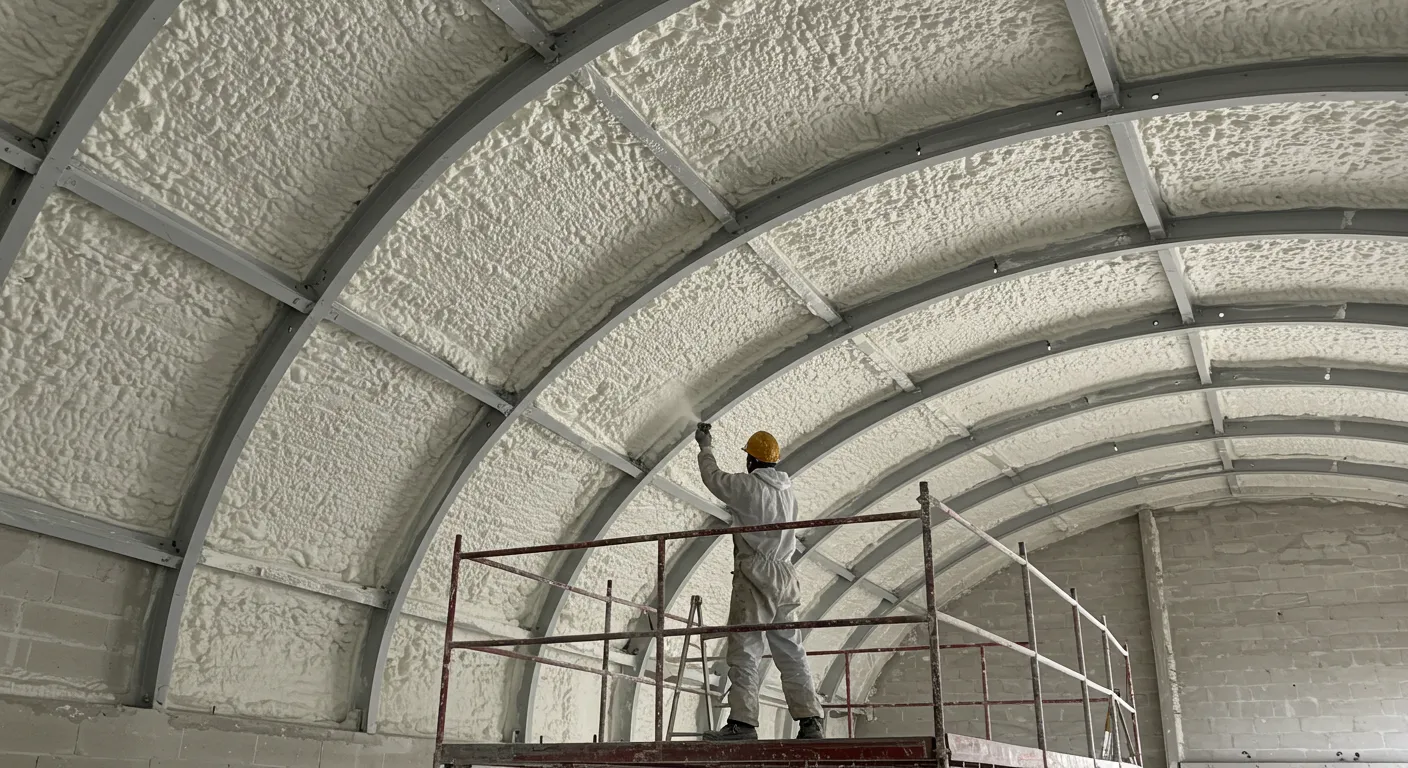Spray foam insulation has gained popularity due to its energy efficiency and ability to create an airtight seal. However, despite its benefits, it presents several challenges that homeowners and builders should be aware of. From health risks and structural concerns to environmental impacts, spray foam insulation can be problematic in many ways. This article explores why spray foam insulation is a problem, covering essential aspects such as health hazards, installation challenges, long-term durability issues, and alternative insulation methods.
The Problem with Spray Foam Insulation
Spray foam insulation is marketed as a high-performance solution, but its drawbacks often outweigh its advantages. The issues range from poor installation results and long-term performance concerns to health hazards and environmental implications. Understanding these problems is crucial for homeowners and builders looking for sustainable and safe insulation options.
Health Risks Associated with Spray Foam Insulation
Exposure to Toxic Chemicals
Spray foam insulation is made from polyurethane, which consists of isocyanates and polyol resin. Isocyanates are known to cause respiratory issues, skin irritation, and other health problems.
Off-Gassing and Indoor Air Quality Concerns
When improperly cured, spray foam insulation can release volatile organic compounds (VOCs), which can lead to persistent odors and poor indoor air quality.
Potential for Allergic Reactions
Individuals with chemical sensitivities or respiratory conditions may experience adverse reactions when exposed to spray foam insulation.
Installation Challenges and Failures
The Importance of Proper Installation
Spray foam insulation requires professional installation, and even slight errors can lead to problems such as improper expansion and air pockets.
Risk of Incomplete Curing
If the foam does not cure properly, it can result in lingering chemical odors and a failure to provide the intended insulation benefits.
Structural Damage Due to Over-Expansion
In some cases, the foam can expand too much, exerting pressure on walls and roofs, leading to structural deformations or cracks.
Long-Term Performance Issues
Shrinking and Cracking Over Time
Spray foam insulation may shrink or crack over the years, reducing its effectiveness and creating gaps that compromise energy efficiency.
Moisture Retention and Mold Growth
Although closed-cell foam resists moisture better than open-cell foam, both types can trap moisture if improperly installed, leading to mold and mildew growth.
Difficulty in Repairs and Maintenance
Once spray foam is installed, it is challenging to repair or replace without cutting out sections, making future modifications costly and complicated.
Environmental and Sustainability Concerns
High Carbon Footprint of Manufacturing
The production of spray foam insulation involves the use of petroleum-based chemicals, contributing to carbon emissions and environmental degradation.
Non-Biodegradable Nature
Unlike natural insulation materials such as cellulose or wool, spray foam does not decompose, leading to landfill waste.
Harmful Blowing Agents
Many spray foam products use hydrofluorocarbons (HFCs) as blowing agents, which have a high global warming potential (GWP).
Alternative Insulation Methods
Fiberglass Insulation
A cost-effective and widely used alternative, fiberglass insulation provides adequate thermal resistance without toxic off-gassing.
Cellulose Insulation
Made from recycled paper, cellulose insulation is an eco-friendly option that offers effective thermal and sound insulation.
Mineral Wool
Mineral wool insulation is fire-resistant, soundproof, and does not shrink or settle over time.
Cotton or Sheep Wool Insulation
Natural fiber insulation options, such as cotton or sheep wool, provide sustainable and safe alternatives to spray foam.
Conclusion
While spray foam insulation offers some advantages, its risks and drawbacks make it a problematic choice for many homeowners. Health concerns, installation difficulties, long-term performance issues, and environmental impacts should be carefully considered before choosing this insulation type. For those in Plano, TX, exploring safer and more sustainable insulation alternatives can provide long-lasting benefits without the associated risks of spray foam.
Get Expert Insulation Solutions
If you are looking for professional guidance on insulation options in Plano, TX, consider consulting experts like Excel Spray Foam – Plano. We can help you explore safer and more effective insulation alternatives tailored to your needs.
Frequently Asked Questions
Is spray foam insulation safe for indoor use?
Spray foam insulation can release VOCs and toxic chemicals if not properly cured, which may impact indoor air quality.
How long does spray foam insulation last?
When properly installed, spray foam insulation can last for decades, but issues like shrinking and cracking can reduce its lifespan.
Can spray foam insulation cause mold problems?
If spray foam insulation traps moisture due to poor installation, it can lead to mold growth over time.
Is spray foam insulation environmentally friendly?
Spray foam insulation is not biodegradable and involves petroleum-based chemicals, making it less environmentally friendly than other insulation options.
What are the best alternatives to spray foam insulation?
Some of the best alternatives include fiberglass, cellulose, mineral wool, and natural fiber insulations like cotton or sheep wool.
Can spray foam insulation damage my home’s structure?
Improper installation can lead to over-expansion, exerting pressure on walls and causing structural damage.
Does spray foam insulation improve energy efficiency?
Spray foam insulation provides a high R-value, but if it deteriorates or shrinks over time, its efficiency may decline.
How much does spray foam insulation cost compared to other options?
Spray foam insulation is typically more expensive than fiberglass or cellulose insulation, both in material cost and installation.
Can spray foam insulation be removed?
Removing spray foam insulation is a complex process that often requires cutting out sections, making modifications costly and labor-intensive.
Is professional installation necessary for spray foam insulation?
Yes, professional installation is crucial, as improper application can lead to significant health risks and insulation failures.



